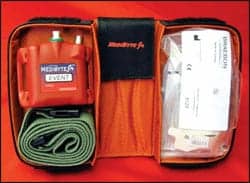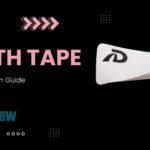How to save time, money, and space at sleep disorders centers while streamlining reaccreditation too.
By Sree Roy
In the past month, how many times has your sleep disorders center had to redo a sleep study at no charge because the initial test failed? It’s clear that tallying, analyzing, and improving this metric can save money. Yet many sleep labs compute this and other quality metrics—empty beds per night, study turnaround times, and sleep study type percentages, among others—only as their reaccreditation nears, and then just so the surveyor can check off the boxes.
There is a better way. Accreditation experts say that maintaining monthly or quarterly analysis of the stats required for reaccreditation can save time, money, space, staffing, and, in these resource-strapped times, maybe the business itself. With a little planning and some help from digital software, a better workflow is available. (As a bonus, reaccreditation will also be easier than ever before.)
“Take steps to be prospective, rather than retrospective,” says Kathryn Hansen, BS, REEGT, CPC, a consultant for regulatory standards. “You must have consistent monitoring of your performance improvement plan.”
Analyzing Sleep Lab Metrics
While regularly calculating metrics is a great first step, “The number doesn’t tell them: What has improved?” says Hansen, who recommends analyzing each figure using a plan-do-check-act framework.
In the case of the failed sleep studies, the analysis could look something like:
- Plan: Identify (or at least make an educated guess about) what caused the tests to fail. For example, the finger pulse oximeter dislodged in three studies.
- Do: Tape the sensor to each patient’s finger for the next month.
- Check: Confirm whether taping the sensor lowered the failure rate. For example, no pulse oximeter sensors fell off this cycle, but a different sensor failed during one study.
- Act: Standardize the taping of the pulse oximeter sensor at the facility, and start the cycle again with a plan for other causes of test failures.
“This is your arc and shows that performance improvement is not just monitoring your program; it’s also being financially wise,” Hansen says. In this scenario, more studies are done correctly the first time—helping patients and the sleep lab’s bottom line.
Add Personnel Education
According to Deborah Panza, BS, RRT, RPSGT, associate program director of DMEPOS, Sleep, and Mobile Dentistry at the Accreditation Commission for Health Care (ACHC), a top-cited deficiency category for sleep labs during accreditation surveys is failures in human resource management protocols, which includes not conducting monthly personnel education.
To go toward this accreditation requirement, try analyzing the metrics and developing an action plan with all sleep lab personnel. “The performance improvement report can be done during a staff meeting. That’s an education in and of itself,” Hansen says, adding, “Try to create links where several standards become a single process.”
Use Sleep Study Software for Accreditation Metrics
While pivot tables in Microsoft Excel remain a popular way to mine data for accreditation, sleep disorders centers that have switched to polysomnography software tools say sleep software’s built-in fields are a more reliable, faster route to recording and finding statistics. “I’m seeing less and less of spreadsheets and much more built-in analysis,” Hansen says. She advises sleep labs to “maximize the ability to use your recording platform summary tools to give you more data.”
Katarina Sullivan, RPSGT, CCSH, a clinical solutions specialist at Nihon Kohden America, spends much of her workdays showing new purchasers of Polysmith Sleep (the company’s polysomnography and home sleep testing software) “how powerful this database is,” she says. Though sleep lab managers initially focus on the basics—such as starting and stopping a sleep study—Nihon Kohden employees help them maximize the software’s extensive data mining capabilities. “No-shows, turnaround times…Our software gives you the ability to do that in one click instead of having to do any type of manual work,” Sullivan says.
There are preferred times to set up software fields and procedures—when opening a new sleep lab, starting a new accreditation cycle, or changing to a new sleep system come to mind—but starting immediately is always the next best option (many software solutions will allow you to backfill patient info, such as insurance company or medical history, if desired).
“At the time of installation, we advise customers to review their accreditation manual” from the ACHC, the American Academy of Sleep Medicine, and/or The Joint Commission, says Scott Blodgett, national vice president of neurology sales at Nihon Kohden America, so fields that correspond to all needed metrics are built. “Once they input it on the front end, they can report on it on the back end,” Blodgett says.
Michael Furgason, RPSGT, RST, CCSH, FAAST, a supervisor at Cleveland Clinic Florida (Martin) sleep disorders center, says switching from Excel to Polysmith “has helped tremendously with decreasing the time it takes to generate reports.”
With manual recording in Excel, Furgason notes, files could become rife with errors. For example, misspelling a physician’s name can lead to an inaccurate tally of how many interpretations the physician completed (Furgason went into Excel at least monthly to clean up these sorts of errors). By contrast, physician names were inputted up front in Polysmith, which means users select the physician from a drop-down menu. “It’s not a lot of additional time” for the sleep techs, Furgason says. “They just need to make sure they do all the drop-downs.”
ACHC’s Panza echoes that streamlining data acquisition from digital housing helps to facilitate reports and data mining. “This can be especially useful for virtual surveys when uploading information,” Panza says.
Benefits Beyond Accreditation
Once a sleep lab manager starts to understand the facility’s trends in real time, that data doubles as evidence for why referral sources should send more patients. For example, perhaps the sleep lab discovers its intrascoring comparison numbers rise well above the national standard. “You could use that to market to your referral base to say, ‘We pay attention to our performance improvement, and we wanted to share our outcomes for the last six months with you,’” Hansen says. “Evidence speaks, and performance improvement is nothing more than evidence that your program is paying attention.”
Another example is if sleep study turnaround times decreased from, say, 10 days to 5—that is a fantastic conversation starter with physicians in private practice, but only if sleep lab employees become aware of the statistic while it is still accurate.
When a CPAP mask recall impacted select patients at Cleveland Clinic Florida (Martin), Furgason was thankful for the forethought put into the sleep study software. “The techs had entered the mask type and lot number up front, so we were able to quickly pull that information back out of our sleep system,” Ferguson says. “It was just seamless.”
Ultimately, setting up a lab for prospective and continual tracking is well worth it for many reasons, Hansen says. “The prospective approach is being ready for accreditation concurrently, and these summary tools can give you trends weekly, monthly, quarterly, and semiannually. And that is how you stay ready for accreditation and reaccreditation.”









